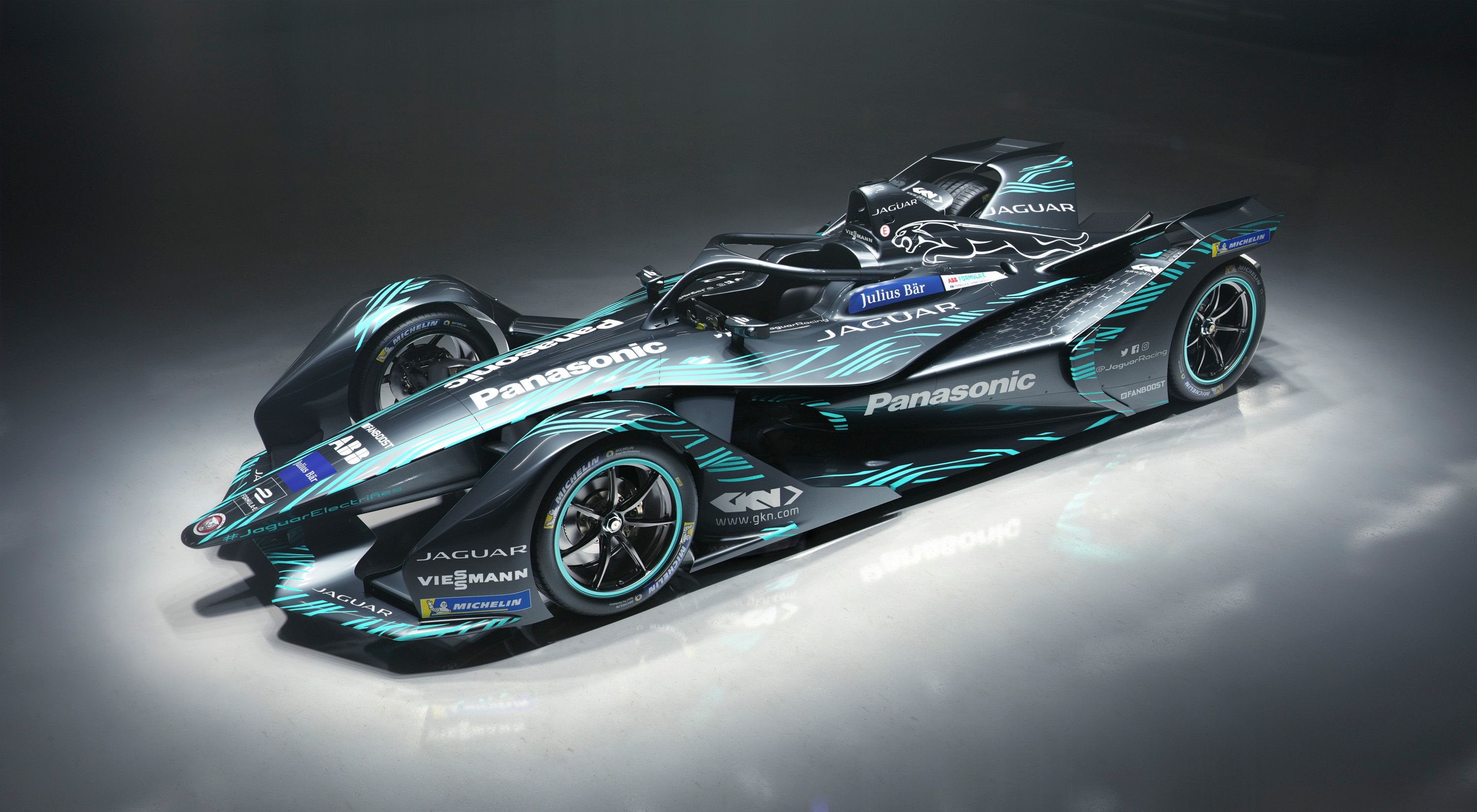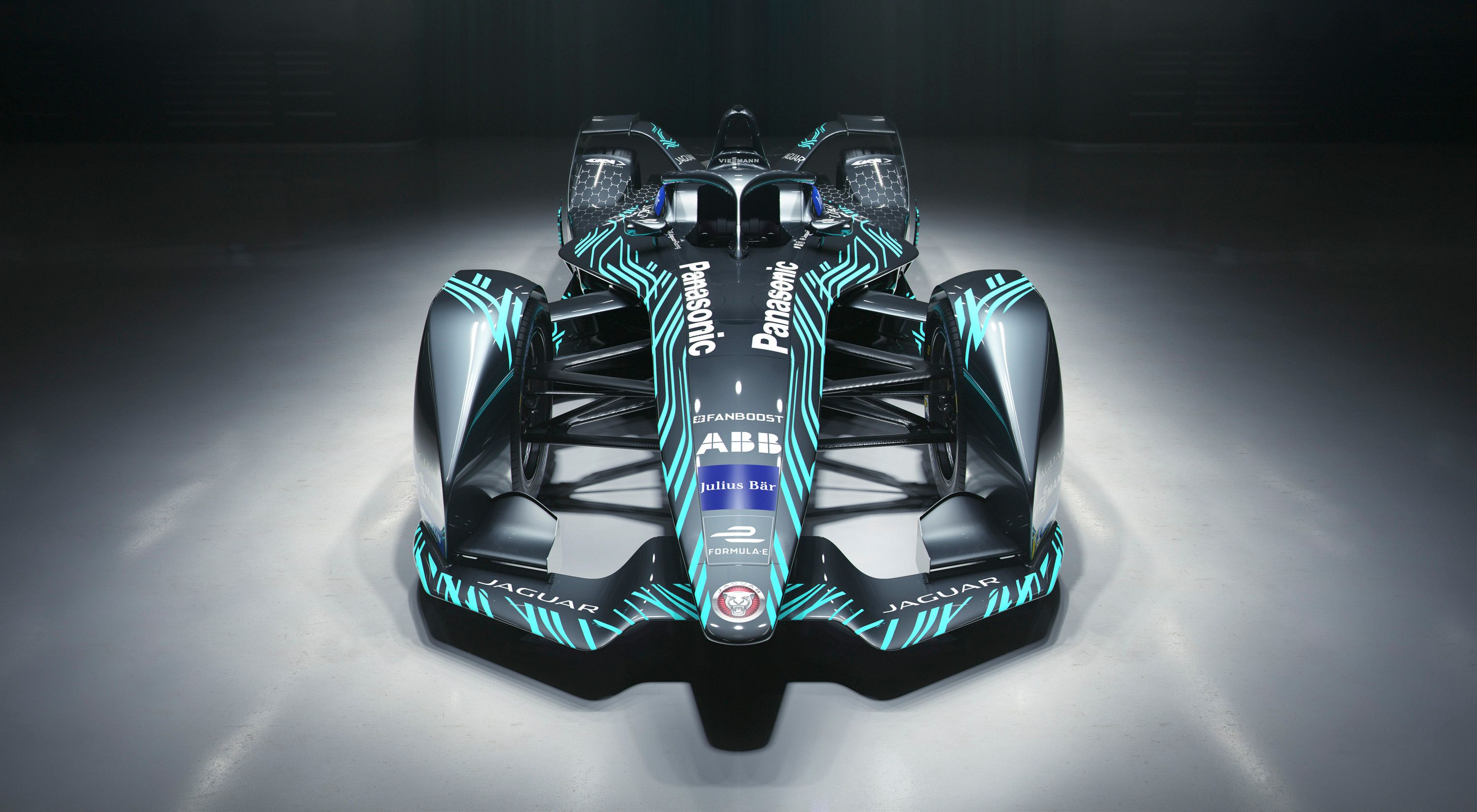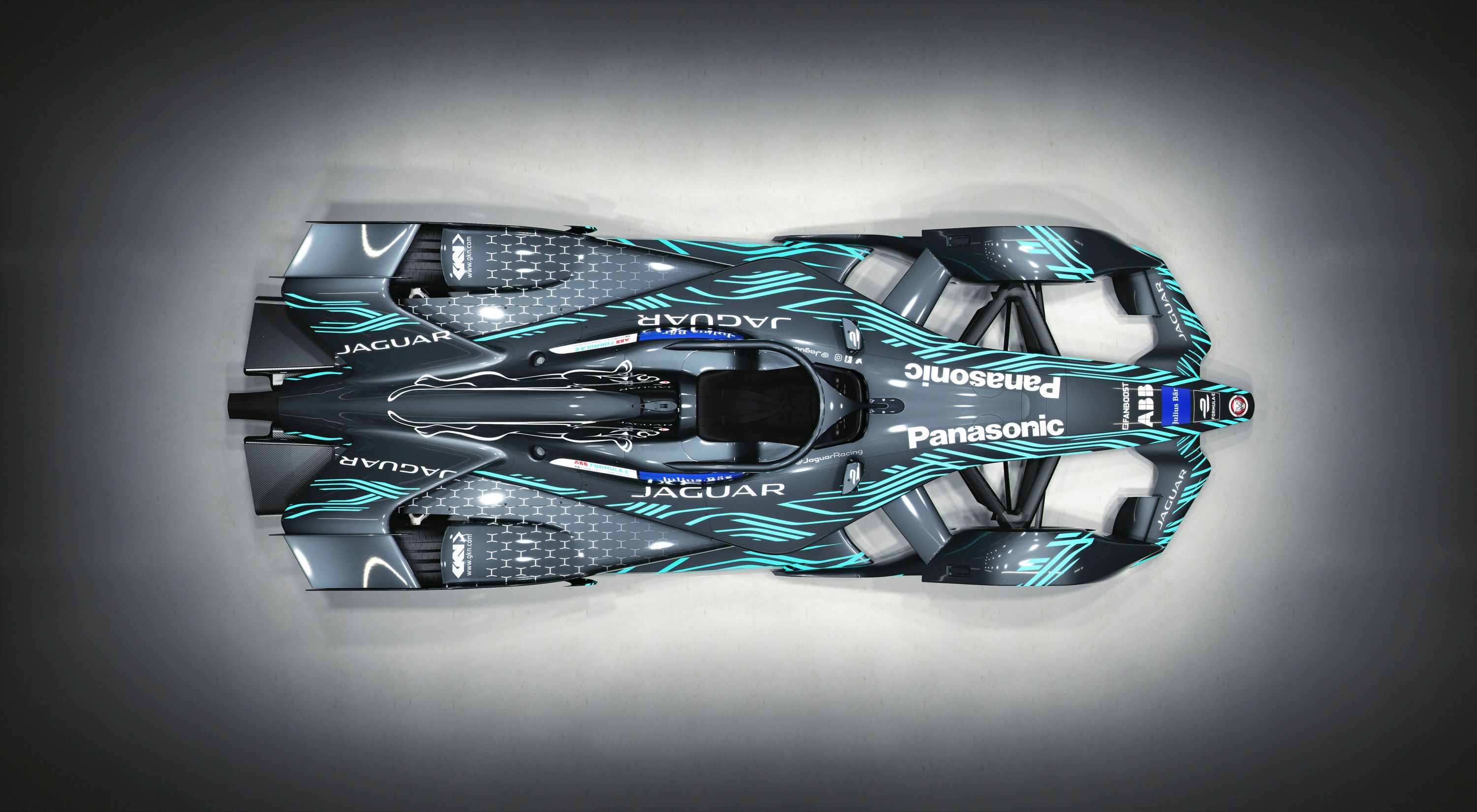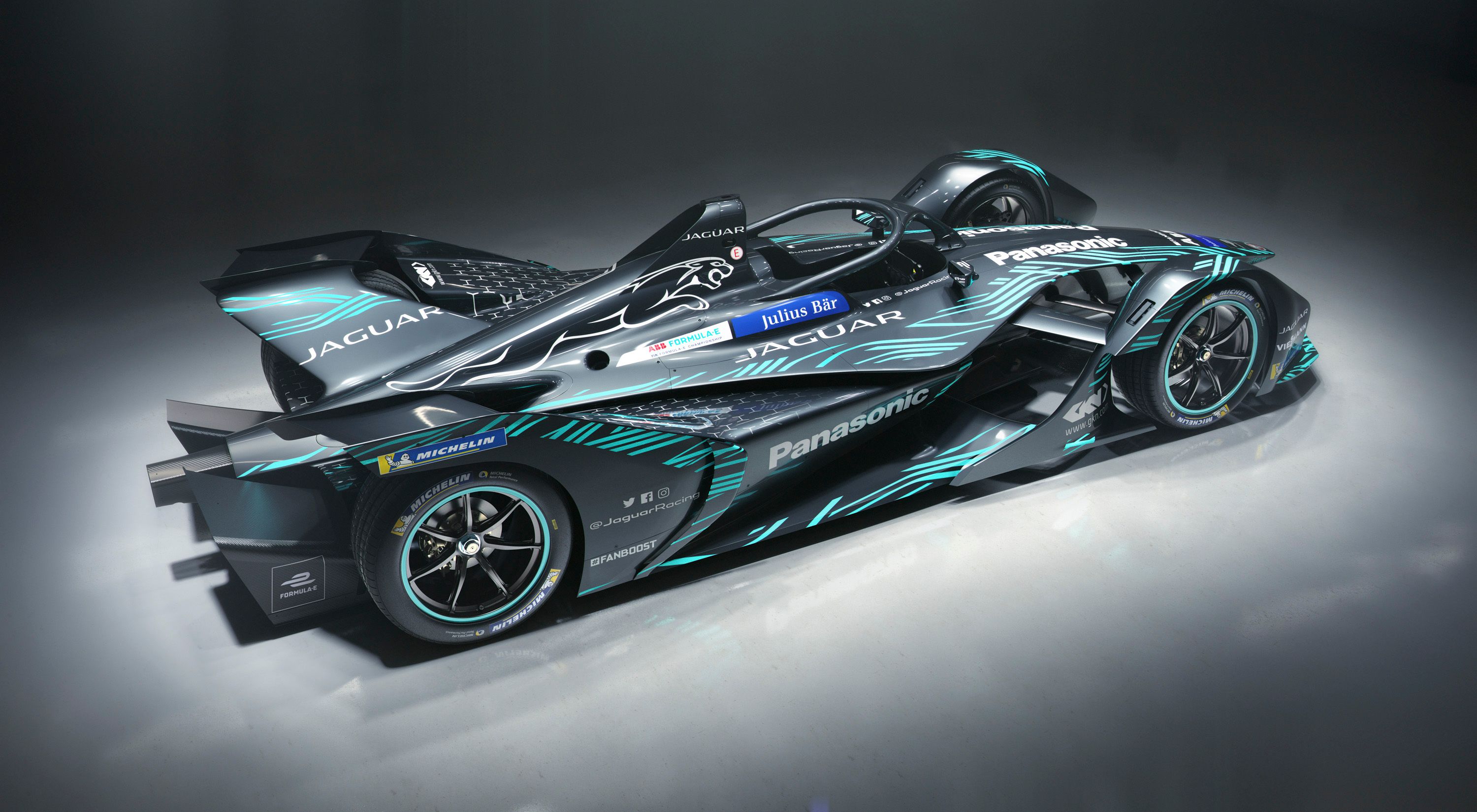Panasonic Jaguar Racing is looking to continue its momentum in Formula E as it enters its third season with the new I-Type 3 race car. After coming in dead last in its maiden season in 2016, Panasonic Jaguar Racing made huge strides in 2017, vaulting up to fifth in the overall constructor’s championship standings in the current season. Ahead of its third season in the series, the British racing firm is looking to break into the podium with a race car it hopes can get them there.
2019 Jaguar I-TYPE 3
- Make: Array
- Model: 2019 Jaguar I-TYPE 3
- [do not use] Vehicle Model: Array
Exterior
It’s been called the Batmobile by a lot of people, and it’s hard to blame them for the description. The Formula E Gen 2 race car is set to make its debut in the 2018-2019 Formula E season, and it’s a far departure from the current racer that’s competing in the 2017-2018 season. Whereas the current-gen racer looks like a traditional open-wheel car, the Gen 2 race car looks like it was developed by Bruce Wayne.
It’s cutting-edge, futuristic, and, at least for some, downright mental. It has a much sharper nose, bodywork that partially covers the tires, and a V-shaped rear wing that’s made up of two aerofoils on opposite ends of the rear that are connected by a “V-shaped” mount, creating that split rear-wing look.
Individually, the details don’t pop up. Put them all together, and you have a car that’s breaking conventional norms on how race cars are supposed to be designed. The less reliance on aerodynamic aids on the body also contributed to the way it looks. In fact, most of the aero aids, including the diffuser, are on the underside of the car. This is where a big part of the downforce the cars need to stick to the ground is created. The car also comes with some safety functions, none more important than the halo around the cockpit that also happens to have an LED lighting strip that will indicate race-related information such as power modes.
Jaguar’s I-Type 3 racer is now dressed to compete. Part of the team’s unveiling of the racer involves showing off the car’s new livery, which largely involves a smattering of green patterned lines covering a majority of the car’s surface. The areas that don’t get the livery are either left in their natural black base color or feature the number of sponsor logos that the team is going to have for the 2018 season.
Overall, the Jaguar I-Type 3 race car measures 5,160 mm (203.15 inches) long and 1,770 mm (697 inches) wide. It also looks every bit the part of a sharply dressed racer that’s looking to make a lot of noise when it takes the grid for the first time this December.
Interior
There’s not a lot to go by with regards to the interior of the Jaguar I-Type racer. It’s a singe-seat cockpit, which shouldn’t come as a surprise to anyone considering it’s a race car. The most important element of the car’s interior is the racing wheel, which, unsurprisingly, features a steady number of knobs and buttons that serve a variety of different functions.
Just like the car, the steering wheel on the Gen 2 racer is expected to be an evolved version of the one that’s being used in the current season. It’s still unclear how the season 5 steering wheel is going to look like, but all teams will be supplied with standard specification steering wheels for the entirety of the season.
For now, you can check out how the steering wheels of Formula E cars have evolved from seasons 1 to 4, courtesy of Mahindra.
Drivetrain
Like all Gen 2 race cars, the Jaguar I-Type 3’s appearance is going to get most of the headlines. But at the end of the day, races are won by how much power a race car has at its disposal. In this case, the Gen 2 Formula E race car comes with an electric powertrain package that’s bolted on to the end of the standard chassis. In theory, the battery pack is capable of producing as much as 335 horsepower, but teams can only tap into its full potential during qualifying as the battery output is capped at 268 horsepower during race time.
The biggest change in this regard involves the batteries having more juice than in previous seasons. Whereas the batteries used from seasons 1 to 4 weren’t specified to last a full 45-minute race, the new batteries will be able to do just that, ensuring that teams can run a full race without having to pit for the purpose of recharging the batteries or having drivers jump into a different full-charged race car to complete the second half of the race.
The longer-range battery that the Jaguar I-Type 3 will use will be supplied by McLaren Applied Technology, a division of the McLaren’s own Formula One team. Eventually, battery technology could be sourced from other companies provided that they meet certain guidelines and restrictions.
Conclusion
Not a lot of people were drinking the Formula E Kool-Aid when people said that it would be the future of motor racing. Four highly successful seasons later, it’s already turning into it.
As Formula One continues to struggle adopting parity in its series, Formula E is flouring before our very eyes. What was once considered a novelty racing series has exploded into one of the most exciting series in the calendar year.
More importantly, it’s also become a breeding ground for innovation, a by-product of the shifting landscape in an industry that has embraced electrification. It wouldn’t be fair to say that Formula E has already leapfrogged Formula One or any of the other established racing series in the world, but give it enough time to evolve, and it could potentially do it.
The Jaguar I-Type 3 is a perfect example of that. Who knew that Jaguar would be as involved in motor racing today after its spectacular failure in Formula One a decade ago? Even better, who expected companies like Mercedes, Audi, Porsche, BMW, Jaguar, Nissan, and DS-Citroen to be involved in Formula E as well.
Times are changing, and at the rate it’s going, Formula E is looking more and more like the future of motorsports.








